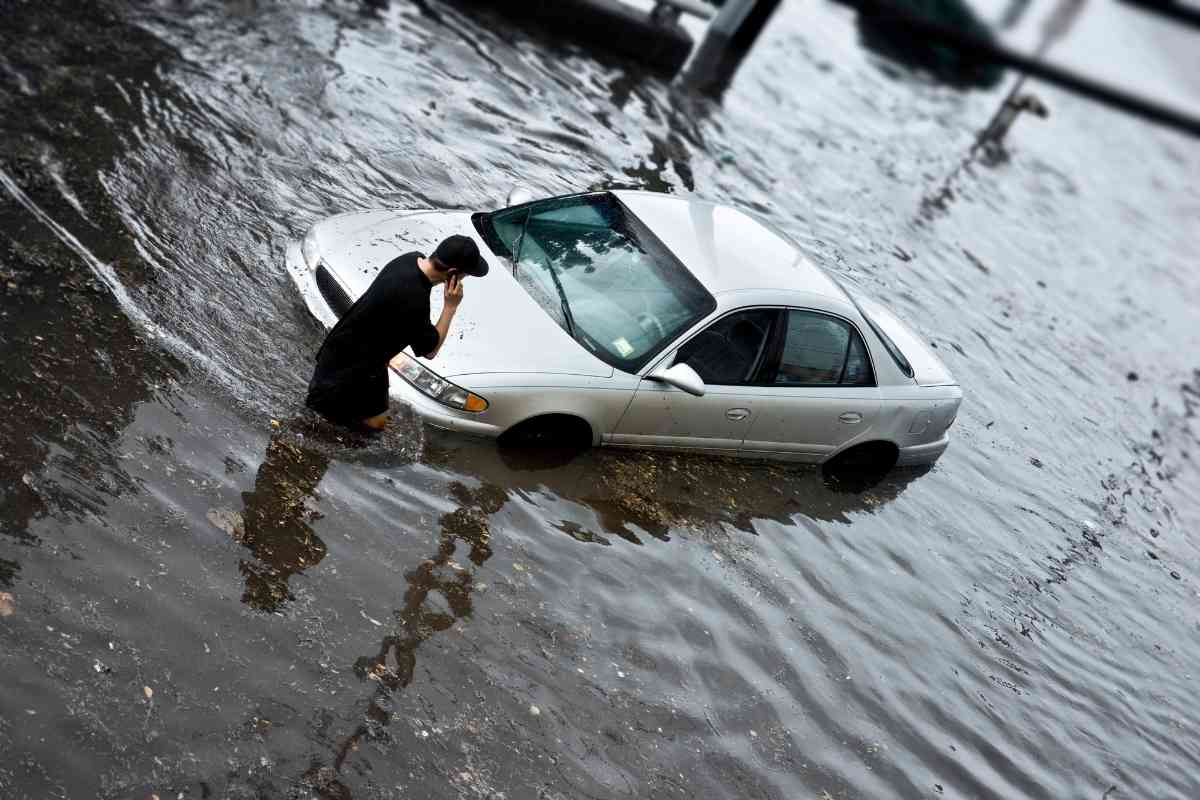How To Tell If You Got Water In Your Engine & What To Do About It
Water and gasoline or electric-powered vehicles don’t mix. To be safe, how do you tell if water got into your engine? What are the signals of water damage or water contamination in your engine?

How do you know if there’s water in your engine?
One of the easiest ways to test if your engine has been exposed to water is to check your oil or transmission fluid. If the dipstick for either one has an unusual color, is milky, or has turned beige, your vehicle has a water problem. You should have it towed to a mechanic. Do not attempt to start.
We’ll explain the answer in greater detail using research from reputable mechanics websites as well as our own knowledge. We spent a few years in dealership service departments and marketing and know a thing or two about vehicle problems.
How can I tell if my vehicle has water in the engine?
Let’s start by saying that water rarely gets into engines. If your vehicle hasn’t recently experienced driving through a flood resulting from an overflowing river or a serious hurricane, water intrusion is unlikely the culprit.
There is also a chance that someone could pour water into your gas tank, oil pan, or transmission fluid, and you wouldn’t know until you start the vehicle.
Check the oil dipstick
Under the hood, your vehicle has a dipstick that reaches into the oil pan to measure how much oil you have left in your car. The dipstick can also be telltale evidence that water has reached the oil pan and will be sucked into the engine if you start the car, which is not good.
You’ll know by the color and texture of the oil. Good clean oil should be in a range from a golden to brown color and is fairly thin and without much texture.
The oil that has been impacted by water will be milkier and potentially lighter in color – like beige. The result may also be more runny than normal, as clean oil normally does a good job of sticking to the dipstick to make it easier to read.

Check the transmission fluid dipstick
This is another gateway to what is happening underneath your hood. The transmission fluid is generally red in color. Anything but red, and you might need some help getting water out. Your transmission doesn’t welcome water especially well.
What should I do if I think there is water in the engine?
Bring the vehicle to a mechanic unless you know how to pump water out of the engine. To be clear, have the vehicle towed to a mechanic if you have a suspicion that you might have water in the engine.
Why? Because the water in your engine oil or your transmission fluid makes those extremely important lubricants far less effective and potentially catastrophic to the motor, pistons, cylinders, or transmission.
While this might cost you some money and time to get a diagnosis, you’ll at least know if you have a problem.
Water in your electrical vehicle’s electrical system
Unfortunately, there is no easy way to tell if you have water in the electrical system.
Generally speaking, if the vehicle was in a flood and you had water up past the doors, the water probably got into the fuses and the wiring that feeds your vehicle with electricity.
What will the dealer do for a wet engine?
While there are lots of little things a mechanic can do in the garage, we’ll go more general: Remove everything you can, like spark plugs and filters, from the under the hood to see if they are wet and set them out to dry.
Replace if necessary. A powerful shop vac can create enough pressure to suck water out of some places, including the bottoms of your spark plug holes. The engine won’t need to be pried apart – just let it dry.
Your transmission is a little different. The dealer shouldn’t just let these dry but also change the differential and transmission fluid where applicable.
The dealer might also advise you to change your oil sooner next time – within 500 miles.
Key Takeaways
- Check for water present within the engine using the oil and transmission dipsticks for any unusual colors or textures
- If in doubt, bring the vehicle to a mechanic anyway. Don’t start your vehicle.
- Sometimes the best solution is to just let it try
- The transmission being dry is more critical than a dry engine.
